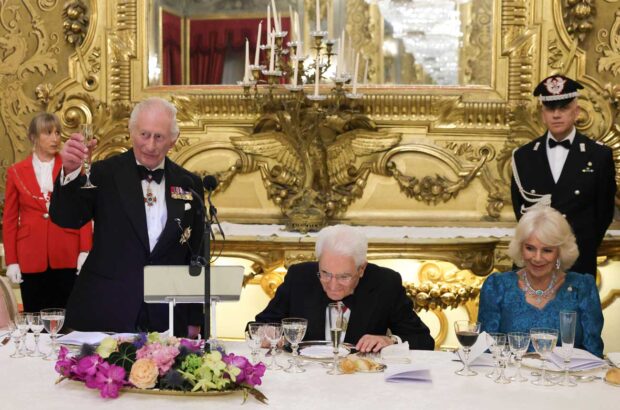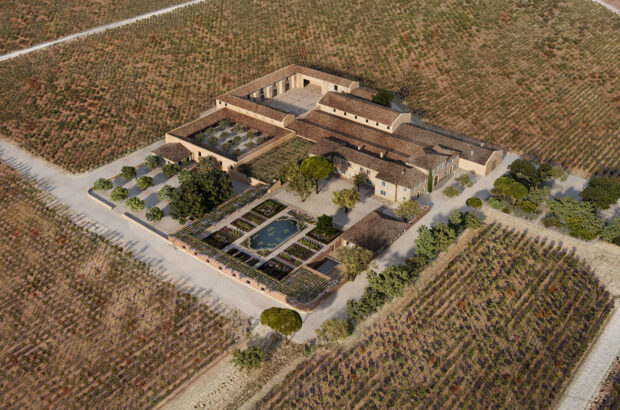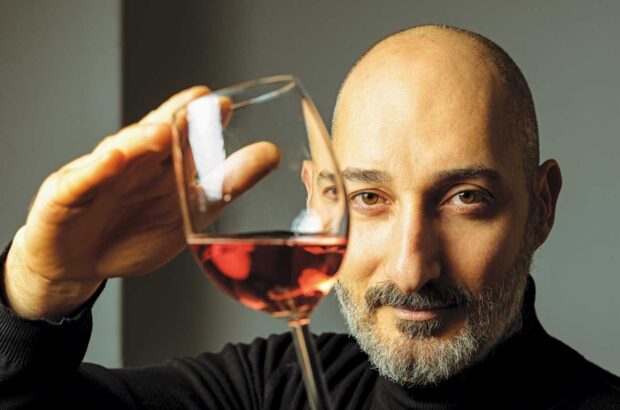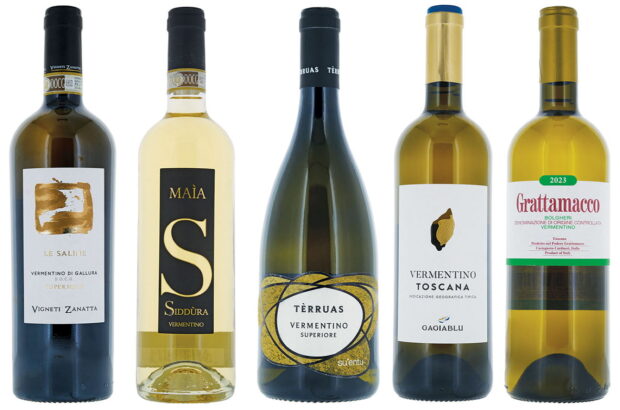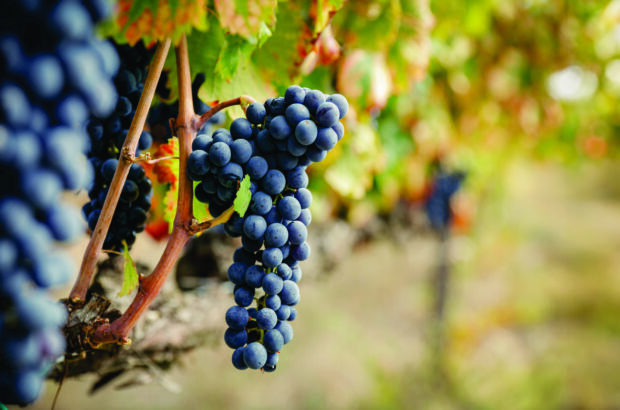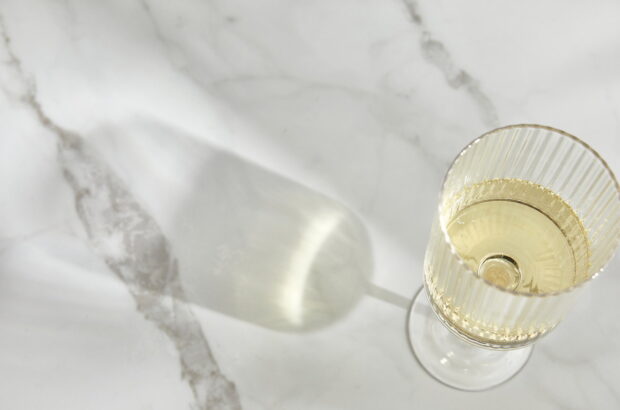- The Oakville region has emerged as one of California’s most distinctive and useful AVAs.
- Cabernet Sauvignon remains the variety of choice among growers.
- The Oakville District has the climate and soils that growers agree are ideal for Bordeaux varieties.
- Growers and winemakers are just beginning to work with fruit from these so called post-phylloxera vines with similar enthusiasm.
In October 1997 history was made at Star’s Restaurant when the Oakville Winegrowers, an association of producers and vineyard owners, got together to promote the Oakville District. Granted American Viticultural Area (AVA) status in 1993, Oakville was slow to get its AVA act together, but despite this, the region has emerged as one of California’s most distinctive and useful AVAs. When its neighbours in Stags Leap District and Carneros District were putting the final touches to their AVA programmes in the late 1980s, the folks in Oakville were debating where to draw the line and what name to use. One group wanted to seek approval for a restricted region along the western benchlands to be named the Oakville Bench.
The thinking at the time was that this region merited being distinguished from vineyards along the valley floor and also from others east of the Napa River which bissects the valley. Others favoured the more inclusive definition which finally won out. After a few years of debate and sometimes heated discussions, the group decided to define Oakville District as the region beginning north of Yountville continuing north to Skellenger Lane. It includes vineyards along both sides of the Silverado Trail and in both the eastern foothills of the Vaca Range and the western foothills of the Mayacamas Mountains. Due north is the Rutherford District, positioning the Oakville District right in the middle of Napa Valley.
Encompassing a range of microclimates, the Oakville District AVA is viewed by Tim Mondavi, and other movers and shakers, as a reasonable starting point. He and others believe that what is now the Oakville District will eventually be sub-divided into several other smaller appellations including, no doubt, the Oakville Bench.
The Team
At that first official event in 1997, the Oakville District roster of wineries and winemakers featured an impressive list of names. Among the illustrious, well established wineries calling Oakville home are the Robert Mondavi Winery (223 hectares (ha)), Franciscan Oakville Estate (97ha), Far Niente Vineyard (49ha), Groth Winery (49ha), Swanson (40ha) and Opus One (40ha under vine). Among upwardly-mobile wineries are Dalla Valle, located in the eastern foothills, and Paradigm to the west. Oakville also claims two highly sought after cult wineries, Harlan Estate and Screaming Eagle. Though it buys most grapes from outside the district, Silver Oak Cellars is another well known local presence. Three non-resident wineries – Sterling, Flora Springs and Beringer – have extensive holdings within the Oakville District.
Of the 2,024ha planted within Oakville today, Cabernet Sauvignon remains the variety of choice among growers. The district’s reputation for Cabernet goes back to 1965, when Joe Heitz made his first Martha’s Vineyard Cabernet Sauvignon. With 16ha located along the Oakville Bench, Martha’s Vineyard became one of California’s most famous wines by the time the 1970 vintage was history. Next door to it is the 223ha To Kalon Vineyard which was developed in the 1870s by a pioneering winemaker named HW Crabb. Belonging today to the Robert Mondavi Winery, To Kalon (Greek for ‘most beautiful’) is the backbone of Mondavi’s Reserve Cabernet Sauvignon. Recently purchased by Joseph Phelps Winery, Backus Vineyard is yet another famous Oakville District Cabernet Sauvignon vineyard. The three hectare Backus Vineyard was singled out by Phelps and offered as a single vineyard wine back in the mid-1970s.
The Terroir
With its mid-valley location and gentle, northeast facing slopes, the Oakville District has the climate and soils that growers agree are ideal for Bordeaux varieties. Located north of the cool and windy Carneros District, Oakville is tempered by cool evening and early morning fogs that move in from San Pablo Bay. The fog gives way to midday sunshine but in general Oakville is slightly cooler than Rutherford, and much cooler than either St Helena or Calistoga. The soils range from clay loam to volcanic ash, but they are generally porous, pebbly and rocky enough to be exceptionally well-drained. As Agustin Huneeus of Franciscan Vineyard explains: ‘Oakville is not only at the geographical centre of Napa Valley but its terroir is ideal for Bordeaux’s most famous variety. Cabernet thrives where deep gravelly soils allow maximum water drainage.’ Dennis Groth of Groth Winery notes ‘it is the combination of good drainage and gravelly soils, that distinguishes the Oakville District and allows Cabernet vine roots to penetrate deep into the soils.’
In the 1990s, phylloxera was a most active little bug in those soils and a big percentage of the district’s vineyards had to be replanted. This replanting programme included all of Opus One, most of Robert Mondavi’s To Kalon Vineyards, parts of Beaulieu’s famous old Cabernet vineyard, Vineyard Two, and much of Franciscan’s estate hectarage, among others. Here, as elsewhere, new vineyards adopted the latest viticultural tools such as dense vine planting, vertical trellis systems, multiple rootstocks and clones, and an emphasis on vine health rather than vine productivity. Here, as elsewhere, growers and winemakers are just beginning to work with fruit from these so called post-phylloxera vines with similar enthusiasm.
Wines of the Oakville District
Cabernet Sauvignon is made by just about every winery located within the appellation. Though they vary widely in style from one producer to the next, Oakville District Cabernets share common features. Those on the valley floor display a blackcurrant, plum and green olive profile with varying degrees of mint, dill and eucalyptus notes. Hillside-grown Cabernet, here as elsewhere, is more powerful and dramatic, with more black cherry fruit than mintiness.
A central theme of Heitz Martha’s Vineyard Cabernet, eucalyptus and mint flavours have also been observed in Groth Reserve Cabernet, which is from a vineyard in the south, and also in Turnbull Cellars’ Cabernet, a winery defining the district’s northern boundary. When Heitz releases the 1996 version of Martha’s Vineyard Cabernet, it will be interesting to see if it and subsequent vintages retain a eucalyptus streak since the entire vineyard was replanted after 1992. Otherwise, Oakville Cabernets display bright red fruits similar to wines from the Stags Leap District, but also reveal more body and tannin. They also show a little less of the power and raisiny character found in typical Rutherford Cabernets.
Owned by the Getty family, Plumpjack is a new winery making attention-getting Cabernet. Both a Reserve and regular bottling are produced from the mature 20ha vineyard adjacent to the winery on the Oakville Cross Road. Another name that bears watching is Vine Cliff, which offers an Oakville Estate Cabernet from its meticulously tended vineyards in the eastern hills.
Best producers: Robert Mondavi Winery, Far Niente Winery, Dalla Valle, Paradigm, Groth, Franciscan, Swanson, Turnbull, Plumpjack, Screaming Eagle, Vine Cliff
Best years: 1996, 1995, 1994, 1992, 1990
Merlot is produced by only a handful, but it is another success. A marvel of consistency, Franciscan’s product is a perfect example of the ripe plum, blackberry and slightly herbal nuances characteristic of the region’s Merlot. Flora Springs also makes beautiful velvet Merlot from its Oakville vineyard, and the Cosentino Winery produces an Estate Merlot with deep ripe fruit and a lush texture. Paradigm captures the extra depth and power derived from hillside plantings of Merlot. Not to be overlooked, Swanson has also been on a hot streak in the 1990s with a Merlot that tends to be intense, with black cherry, black olive and spice character.
Best producers: Franciscan, Swanson, Paradigm, Cosentino
Best years: 1996, 1995, 1994, 1992
Red Meritage wines are well represented and may prove to be the best representatives of regional character, if not the best wine. Leading the way, Opus One relies heavily on Cabernet Sauvignon to achieve its seamless, polished kind of beauty. Made under the watchful eye of consultant Michel Rolland, the much ballyhooed Harlan Estate, a blend of Cabernet and Merlot, is another exciting Meritage, but it has been challenged recently by Maya, a blend consisting of Cabernet Sauvignon with a large dose of Cabernet Franc. From a hillside vineyard developed by Dalla Valle, Maya is a wonderfully scented, rich wine that American critics like to describe as profound and compelling. One of my personal favourites is Franciscan’s magnificent example, combining Cabernet, Cabernet Franc and Merlot to end up with a wine of restrained power and supple character.
Best producers: Opus One, Harlan Estate, Dalla Valle, Franciscan
Best years: 1996, 1995, 1994, 1993, 1992, 1991, 1990
Sangiovese and Syrah are both being treated as seriously within Oakville as they are in most other California regions. To date only Swanson has a track record with Syrah, but that record is excellent. Marco Cappelli, Swanson’s winemaker has come up with ‘Alexis’, a spectacular wine made from Cabernet Sauvignon and a dollop of Syrah. In 1995 he added
a splash of Syrah to Sangiovese from the Estate vineyard, again with delightful results. When replanting the Turnbull vineyard, new owner Patrick O’Dell laid out just over a hectare to Syrah, and given O’Dell’s commitment to quality, that Syrah also bears watching.
Robert Pepi Winery and Dalla Valle have joined Swanson in working with Sangiovese. Pepi was among the first to plant Sangiovese in Napa Valley and the 1995 and 1996 have been ranked among the best. Labelled Pietro Rosso, Dalla Valle’s Sangiovese, from its hillside vineyard, is a spectacular wine.
Franciscan Estate, one of the first to label a wine from Oakville, remains one of the few Chardonnay producers within the district. Its Cuvée Sauvage, one of the first fermented on the native yeasts and bottled unfiltered, has all along been one of the most successful of the California Chardonnays.
In early November of 1998, the Oakville Winegrowers held their third annual barrel tasting and media event. Though its members were slow to rally behind a common cause, it now appears certain they will stand behind the Oakville District banner for some years to come. Or at least until a few drag out that old Oakville bench.


